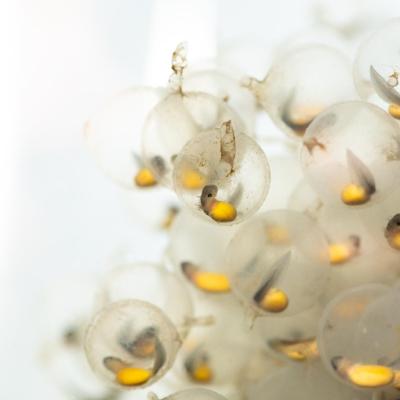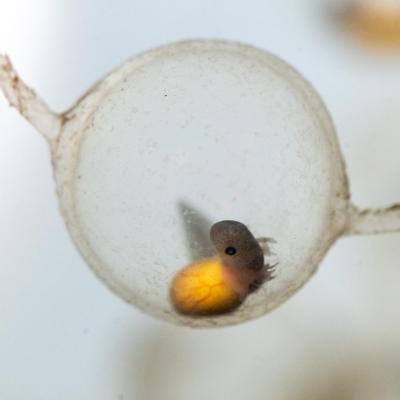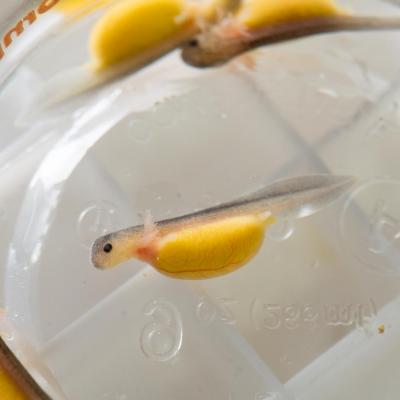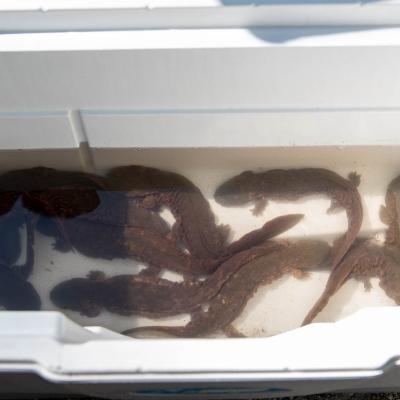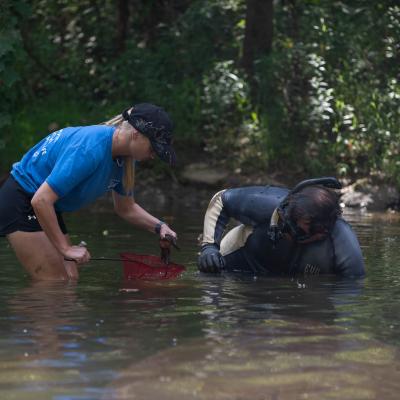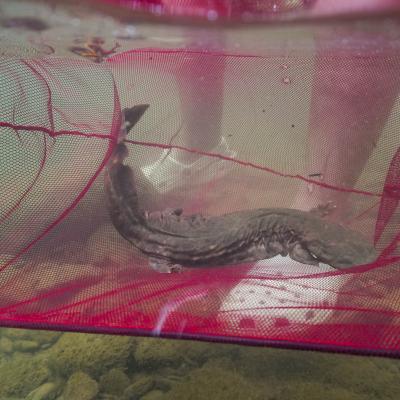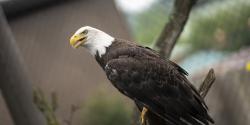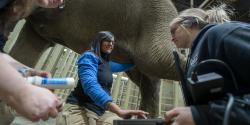You may be asking yourself, “So, what’s a hellbender?”
Hellbenders are North America’s largest amphibian by weight, growing up to 4 pounds and stretching over 2 feet in length! With a slick protective coating of slime covering them, they are often called “snot otters.” These incredible salamanders are entirely aquatic and live in Ohio streams that are tributaries of the Ohio River. They can also be found in other states near the Appalachian Mountains - from New York to Alabama - as well as parts of Missouri, Arkansas, and Nebraska.
We know that the number of hellbenders in Ohio has decreased drastically over the last several decades mainly due to habitat degradation caused by soil erosion, causing sediment to build up in streams. Pollutants entering our streams also play a role in their decline.
The Wilds and the Columbus Zoo and Aquarium have partnered with the Ohio Division of Wildlife for over a decade to raise and release young hellbenders into stream habitats where environmental conditions have improved enough to support them.
The rearing process for hellbenders begins with eggs that hellbenders lay in a stream and are hatched under the watchful eye of our experienced team members. This process dramatically increases the survival rate of larval hellbenders beyond what it would be if the eggs hatched in their natural conditions.
While the hellbenders are being cared for, teams tag each one with a Passive Integrated Transmitter (PIT), similar to a domesticated pet's microchip, so they can later identify it by scanning it. We know from research conducted after earlier releases that their survival is good and, over decades, we should be able to rebuild hellbender populations with this reintroduction process.
Hellbenders live in cavities under large rocks in the stream, where they are protected from predators and can forage on aquatic invertebrates like crayfish and insect larvae. Several biologists locate appropriately-sized cavities under submerged boulders that would make good homes for these young hellbenders. Since hellbenders naturally like dark, tight spots, they usually squeeze right into their new home.
How You Can Help
There are a few actions that you can take at home that will make a significant impact in improving the water quality of creeks and rivers in your area.
- Plant native plants in your yard to help filter out sediment, fertilizers, and pesticides before they are carried into storm drains by rushing rain water.
- If you live near or visit a creek or river, do not pick up or move rocks from the stream bed... Those rocks are vitally important habitats for hellbenders and many other aquatic animals. Disturbing the rocks destroys their shelters and disrupts their ability to find food.

